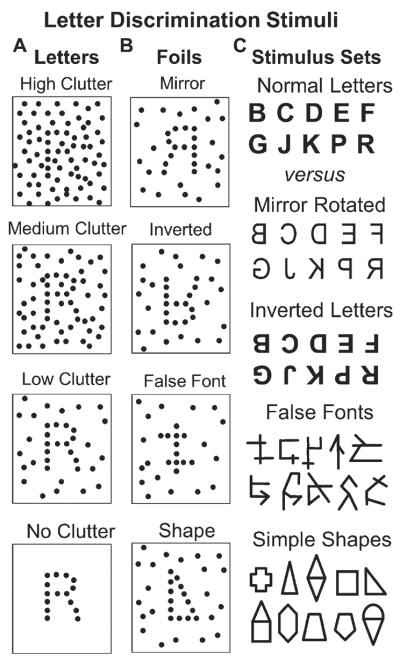Fig. 1.

A fully interleaved sequence of letters and non-letters was presented to obtain static clutter discrimination thresholds for each type of non-letter. A) Letters formed by dots were presented with a continuously varied number of superimposed “clutter” dots that were randomly distributed across the area surrounding the letter; high to low clutter examples are at arbitrary levels of the continuously varying range of clutters presented in the stimuli. B) Four types of non-letter stimuli were presented with superimposed clutter dots: mirror image letters, inverted letters, false fonts, and simple shapes. C) Archetypes of the letter versus non-letter stimuli presented in the two-alternative forced choice letter discrimination task: Ten, graphically distinct, letters from the English alphabet, mirror rotated (horizontally inverted) versions of the normal letters, horizontally and then vertically inverted versions of the normal letters, false font figures that are graphically similar to letters, and simple shapes that are graphically similar to letters.
